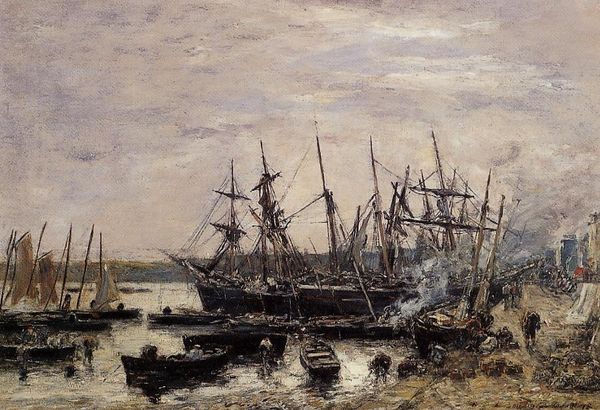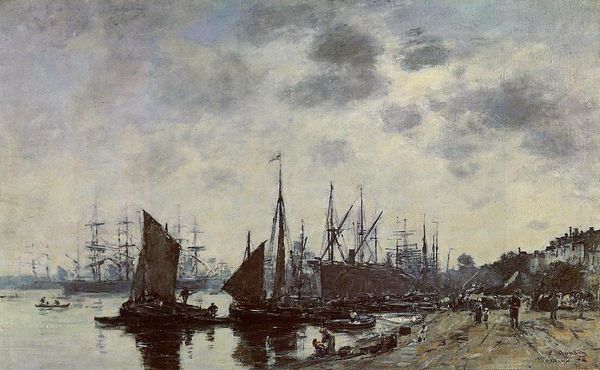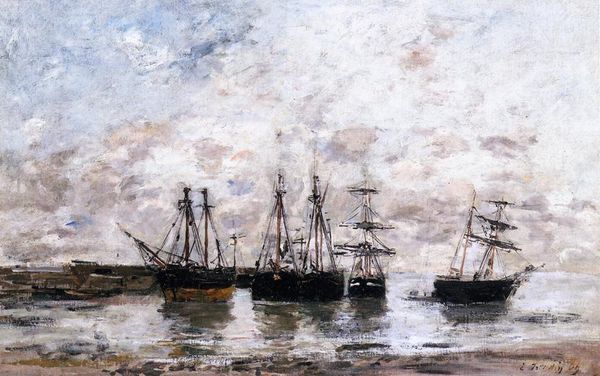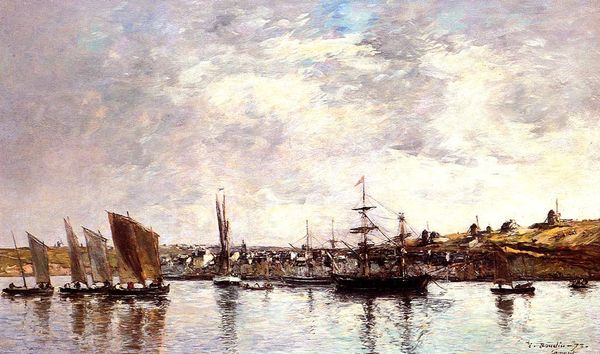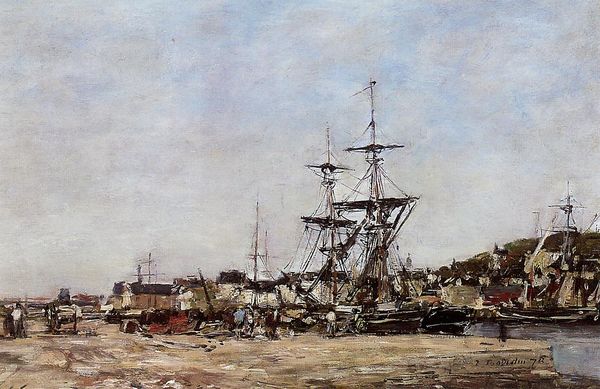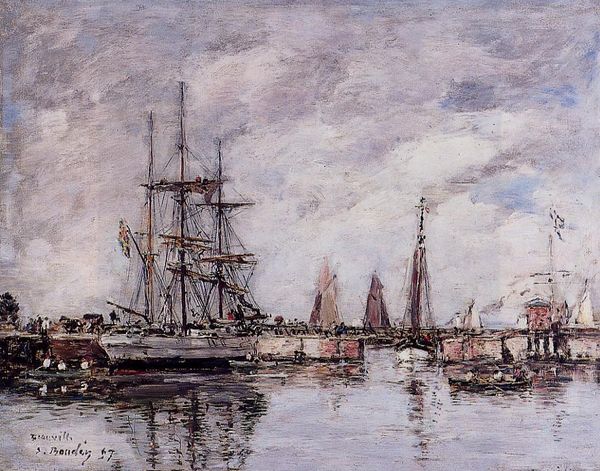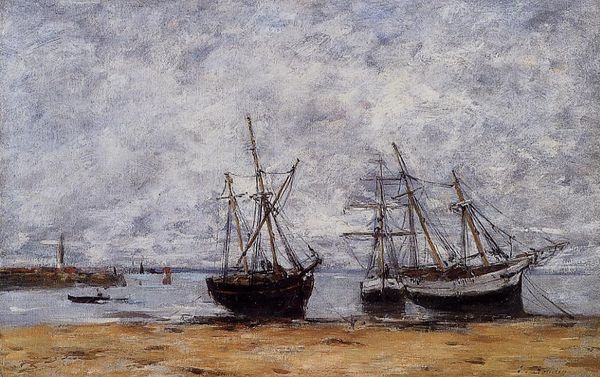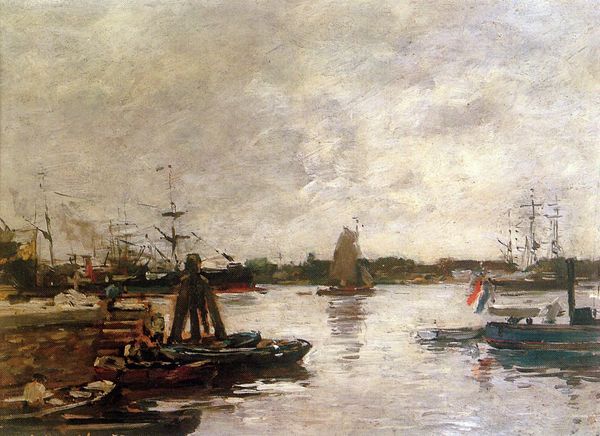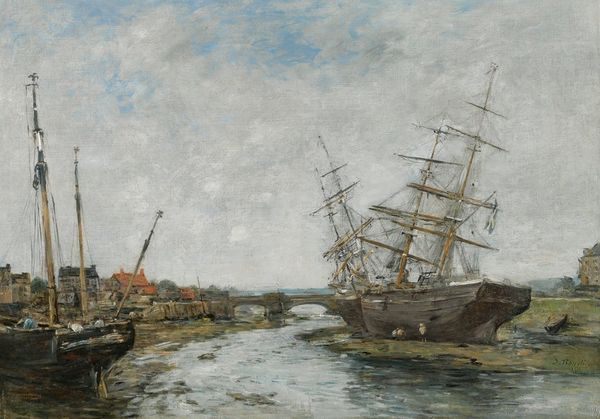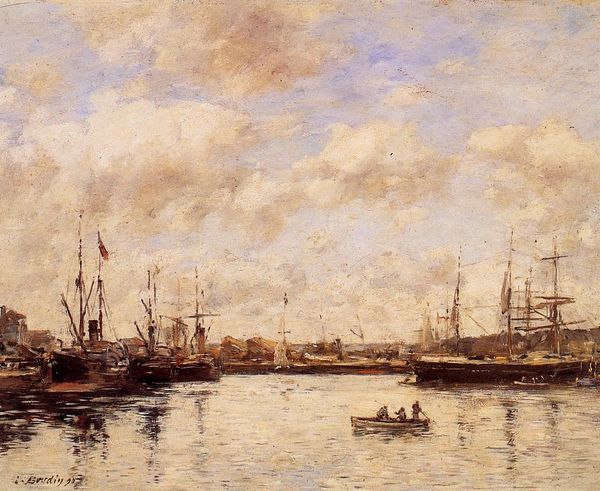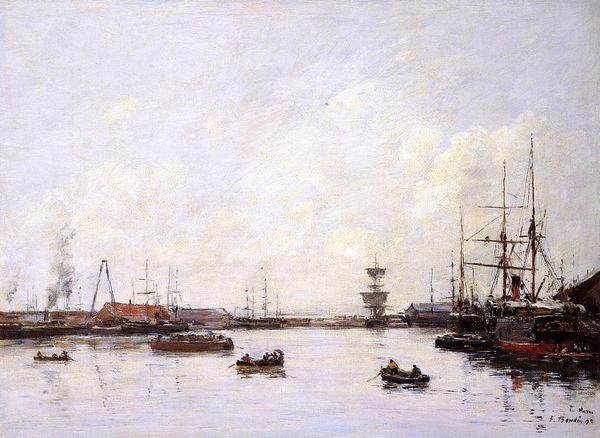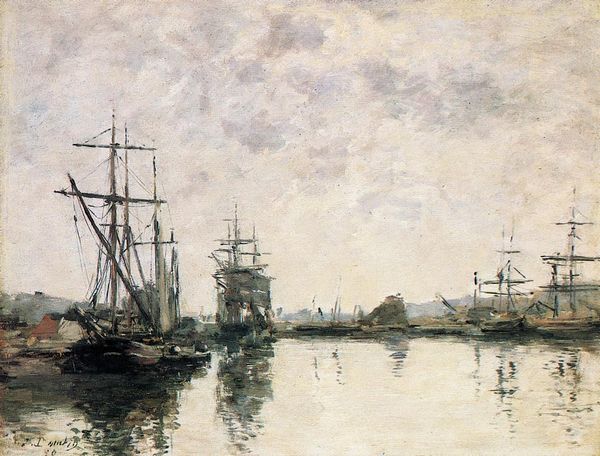
painting, plein-air, oil-paint
#
boat
#
ship
#
painting
#
impressionism
#
plein-air
#
oil-paint
#
vehicle
#
landscape
#
impressionist landscape
#
oil painting
#
water
#
cityscape
Copyright: Public domain
Curator: This is Eugène Boudin's "Camaret, the Port," painted in 1872. Boudin, a forerunner of Impressionism, captures a bustling harbor scene in this oil painting, currently held in a private collection. Editor: Well, my first impression is definitely melancholic. The muted grays and blues, the somewhat desolate feel... it’s like a scene from a sailor’s ballad about leaving port and loved ones behind. Very evocative. Curator: Absolutely. Boudin’s work here provides insight into maritime communities and labor in 19th-century France, when industrialization and colonial endeavors deeply influenced port cities like Camaret. The activities of shipbuilding and seafaring, often romanticized, were underpinned by the back-breaking work of ordinary people, a reality Boudin subtly acknowledges. Editor: You can almost smell the salt and tar, can’t you? And I love how the light dances on the water. The brushstrokes are loose, almost blurry, giving everything a dreamlike quality. I find that he renders the sky with a sublime delicacy – almost a character of its own. The people, they're so small, nearly consumed by this scene that is both picturesque and monumental in terms of industrial narratives. Curator: His rendering of the sky is indeed notable. Boudin’s focus on painting en plein air, directly observing the atmospheric conditions, distinguishes his contribution from his contemporaries. There’s a palpable sense of realism – the chill in the air, the dampness on the docks, the fleeting moment of sunlight piercing through the clouds – this is how one can see his subtle critique to romantic depictions. He presents working class lives, without embellishment but also without disdain. Editor: It really makes you think about the relationship between humans and nature, and about human labor as an industry that exploits natural resources, while celebrating that. It’s a beautiful, thought-provoking painting. Like looking into a misty mirror reflecting the past. I’m especially drawn to that single figure in the center, the individual standing alone, facing the viewer but so obviously involved in the busy, almost frantic scenes all around them. They offer us the viewer access to a different perspective, perhaps? Curator: Considering gender, race, and class, such access enables complex intersections. A scene reflecting its era of transformation where the collective toil overshadows individuality, while hinting at both human costs and technological progress – truly a rich narrative encapsulated in paint. Editor: It’s made me appreciate the complexity beneath its initially somber façade. Curator: Precisely, it's in those layers where the depth lies, don’t you think?
Comments
No comments
Be the first to comment and join the conversation on the ultimate creative platform.
